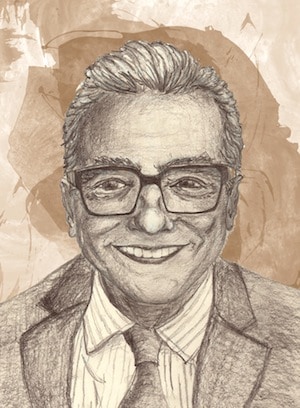The auteur theory, coined by the earliest French critics of Cahiers du Cinéma, states that a director is the sole creative agency behind his or her films, and that there are underlying themes and conventions recurring throughout their filmographies.

WILLIAM AHN/THE VARSITY
This auteurist mandate is especially applicable to Martin Scorsese, whose filmography consists largely of “gangster” films that usually play out as critiques of capitalism and the American Dream. Scorsese’s latest film, The Wolf of Wall Street, complements his 1990 film, Goodfellas, in many ways.
The Wolf of Wall Street takes the generic conventions of Goodfellas and resituates them within a modern context in which the characters are less hardened criminals than seemingly contributive members of society. What Scorsese emerges with is a white-collar crime film — a lavish display of greed and corruption in the financial sector. The word “display” is of the essence here, for Scorsese neither celebrates nor indicts capitalism; he simply shows us the wild debauchery and lets us make of it what we will.
Goodfellas and The Wolf of Wall Street feature very similar protagonists: both are self-made capitalist heroes whose only character flaws are that they become increasingly more detestable. In Goodfellas, protagonist Henry Hill is a young, wannabe gangster who eventually works his way into the Lucchese crime family. In The Wolf of Wall Street, Jordan Belfort is an aspiring New York City stockbroker whose insatiable desire for money escalates into ceaseless partying and a drug addiction.
In The Wolf of Wall Street, Scorsese’s founding principle of crime film is evident: integral to the American Dream is a sense of illegality. Sometimes, in order to succeed, one must first be prepared to lie, backstab, extort, and steal; such success inevitably comes at the expense of other people. This principle is most pronounced in the scene where Belfort and his associates are huddled around the telephone, coercing uneducated people into investing in penny stocks.
Scorsese paints a portrait of the American Dream that is pointedly unromantic. Even when Belfort and Hill have obtained their wealth, it only buys them an opportunity to indulge in more illicit behaviour, whether it be with drugs, alcohol, or prostitutes. The end quickly becomes more illegal than the means, identifying an unsettling possibility: perhaps the American Dream is more accessible through corruption than honesty and hard work.
Belfort does not suffer the same fate as Hill, who goes into witness protection and is forced to live the rest of his life as a schnook. It is a testament to the perversity of society that he remains a millionaire and motivational speaker on sales, begging the question: “Who, after bearing witness to his aberrant behaviour, could possibly idolize Belfort?” The film’s final shot — a group of calm, attentive faces, all eager to learn Belfort’s strategies and perhaps even become like him — communicates this idea perfectly. Belfort is not the exception, but the rule — there is an entire culture of people that worship and admire him.
From an auteurist’s perspective, Scorsese has evolved as a filmmaker, expanding the conventions of his organized crime films in a way that is more relevant to contemporary society. Crime does not just take place among seasoned criminals, but in the work place, too, and is deeply embedded in the capitalist system.
Whether Scorsese portrays Belfort in a positive or negative light hardly seems to matter, with Belfort clearly having embraced his bad-boy persona. At the beginning of the film, Belfort’s first wife insists: “There is no such thing as bad publicity.” It is safe to say, judging by what followed, this quickly became his motto.

